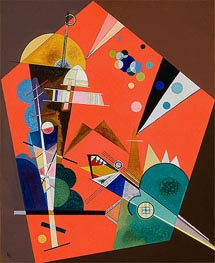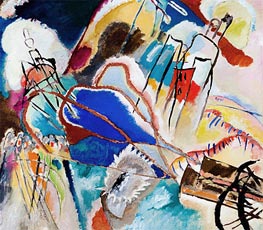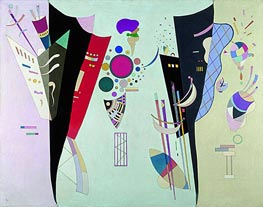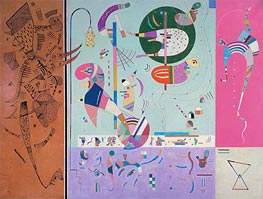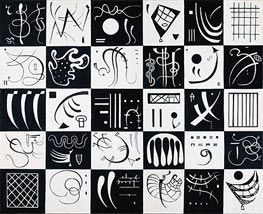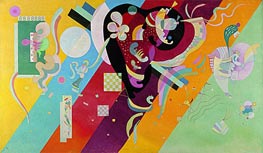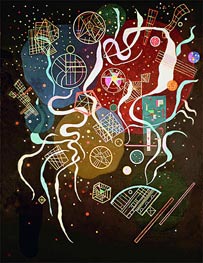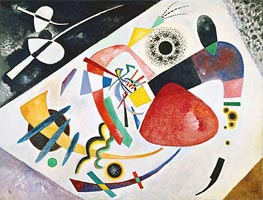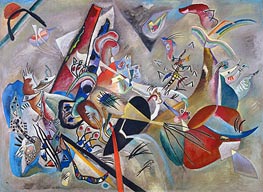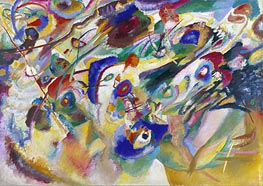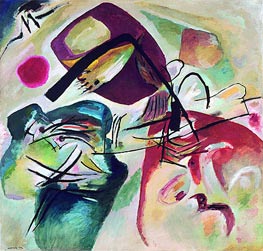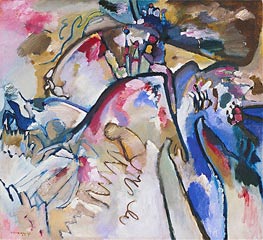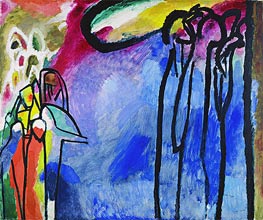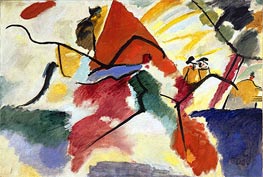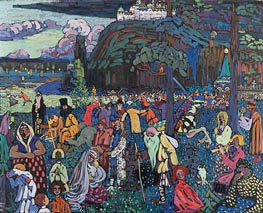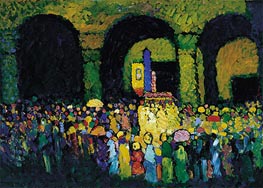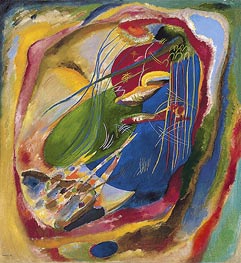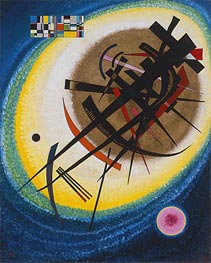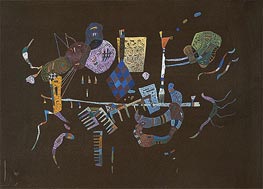Abstract Paintings - Page 11
Abstract painting is a style of art that emerged in the early 20th century as a response to the traditional forms of representation. It is characterized by non-representational forms, colors, and shapes that challenge the viewer's perceptions of reality. The movement was inspired by various sources, including Primitivism, Futurism, Cubism, and Expressionism.
Abstract painting is considered to be one of the most significant art movements of the 20th century and continues to influence contemporary art. It is a form of non-representational art, meaning that it does not depict recognizable objects or scenes from the natural world. Instead, it uses color, shape, texture, and form to create an emotional response in the viewer.
The origins of abstract painting can be traced back to the late 19th and early 20th centuries, when artists began to experiment with new forms of expression that went beyond the traditional representational style. Early pioneers of abstract art include Wassily Kandinsky, Kazimir Malevich, and Piet Mondrian.
One of the key features of abstract painting is the use of color as an expressive element in its own right. Artists such as Mark Rothko and Joan Mitchell used color in a highly emotional and expressive way, creating large, monochromatic canvases that sought to evoke a sense of spiritual transcendence.
Abstract Expressionism is another important offshoot of abstract painting. It emerged in the United States in the 1940s and 1950s and was characterized by gestural brushwork and the use of large canvases. Artists such as Jackson Pollock, Willem de Kooning, and Franz Kline became synonymous with this movement, which was seen as a highly individualistic and expressive form of art.
In conclusion, abstract painting is a diverse and complex art form that continues to evolve and inspire artists. Despite its non-representational nature, it has a rich history and has had a profound impact on the development of modern art.
Abstract painting is considered to be one of the most significant art movements of the 20th century and continues to influence contemporary art. It is a form of non-representational art, meaning that it does not depict recognizable objects or scenes from the natural world. Instead, it uses color, shape, texture, and form to create an emotional response in the viewer.
The origins of abstract painting can be traced back to the late 19th and early 20th centuries, when artists began to experiment with new forms of expression that went beyond the traditional representational style. Early pioneers of abstract art include Wassily Kandinsky, Kazimir Malevich, and Piet Mondrian.
One of the key features of abstract painting is the use of color as an expressive element in its own right. Artists such as Mark Rothko and Joan Mitchell used color in a highly emotional and expressive way, creating large, monochromatic canvases that sought to evoke a sense of spiritual transcendence.
Abstract Expressionism is another important offshoot of abstract painting. It emerged in the United States in the 1940s and 1950s and was characterized by gestural brushwork and the use of large canvases. Artists such as Jackson Pollock, Willem de Kooning, and Franz Kline became synonymous with this movement, which was seen as a highly individualistic and expressive form of art.
In conclusion, abstract painting is a diverse and complex art form that continues to evolve and inspire artists. Despite its non-representational nature, it has a rich history and has had a profound impact on the development of modern art.
page 11 of 16
SKU: KAW-16173
Wassily Kandinsky
Original Size: unknown
Public Collection
Wassily Kandinsky
Original Size: unknown
Public Collection
SKU: KAW-16172
Wassily Kandinsky
Original Size: 111 x 111.3 cm
Art Institute of Chicago Illinois USA
Wassily Kandinsky
Original Size: 111 x 111.3 cm
Art Institute of Chicago Illinois USA
SKU: KAW-16171
Wassily Kandinsky
Original Size: 88 x 100 cm
The State Hermitage Museum St. Petersburg Russia
Wassily Kandinsky
Original Size: 88 x 100 cm
The State Hermitage Museum St. Petersburg Russia
SKU: KAW-16170
Wassily Kandinsky
Original Size: 114 x 146 cm
Centre Georges Pompidou Paris France
Wassily Kandinsky
Original Size: 114 x 146 cm
Centre Georges Pompidou Paris France
SKU: KAW-16169
Wassily Kandinsky
Original Size: 89 x 116 cm
Public Collection
Wassily Kandinsky
Original Size: 89 x 116 cm
Public Collection
SKU: KAW-16168
Wassily Kandinsky
Original Size: 146 x 88 cm
Moderna Museet Stockholm Sweden
Wassily Kandinsky
Original Size: 146 x 88 cm
Moderna Museet Stockholm Sweden
SKU: KAW-16167
Wassily Kandinsky
Original Size: 81 x 100 cm
Centre Georges Pompidou Paris France
Wassily Kandinsky
Original Size: 81 x 100 cm
Centre Georges Pompidou Paris France
SKU: KAW-16166
Wassily Kandinsky
Original Size: 113.5 x 195 cm
Centre Georges Pompidou Paris France
Wassily Kandinsky
Original Size: 113.5 x 195 cm
Centre Georges Pompidou Paris France
SKU: KAW-16165
Wassily Kandinsky
Original Size: 116 x 89 cm
The Tretyakov Gallery Moscow Russia
Wassily Kandinsky
Original Size: 116 x 89 cm
The Tretyakov Gallery Moscow Russia
SKU: KAW-16164
Wassily Kandinsky
Original Size: 137 x 181 cm
Public Collection
Wassily Kandinsky
Original Size: 137 x 181 cm
Public Collection
SKU: KAW-16163
Wassily Kandinsky
Original Size: 129 x 176 cm
Centre Georges Pompidou Paris France
Wassily Kandinsky
Original Size: 129 x 176 cm
Centre Georges Pompidou Paris France
SKU: KAW-16162
Wassily Kandinsky
Original Size: 100 x 140 cm
Public Collection
Wassily Kandinsky
Original Size: 100 x 140 cm
Public Collection
SKU: KAW-16161
Wassily Kandinsky
Original Size: 189 x 198 cm
Centre Georges Pompidou Paris France
Wassily Kandinsky
Original Size: 189 x 198 cm
Centre Georges Pompidou Paris France
SKU: KAW-16160
Wassily Kandinsky
Original Size: 74 x 100 cm
Museum Boijmans Van Beuningen Rotterdam Netherlands
Wassily Kandinsky
Original Size: 74 x 100 cm
Museum Boijmans Van Beuningen Rotterdam Netherlands
SKU: KAW-16159
Wassily Kandinsky
Original Size: 96 x 105 cm
Public Collection
Wassily Kandinsky
Original Size: 96 x 105 cm
Public Collection
SKU: KAW-16158
Wassily Kandinsky
Original Size: 120 x 141.5 cm
Public Collection
Wassily Kandinsky
Original Size: 120 x 141.5 cm
Public Collection
SKU: KAW-16157
Wassily Kandinsky
Original Size: 106 x 157.5 cm
Centre Georges Pompidou Paris France
Wassily Kandinsky
Original Size: 106 x 157.5 cm
Centre Georges Pompidou Paris France
SKU: KAW-16156
Wassily Kandinsky
Original Size: 77.5 x 100 cm
Public Collection
Wassily Kandinsky
Original Size: 77.5 x 100 cm
Public Collection
SKU: KAW-16155
Wassily Kandinsky
Original Size: 94 x 130 cm
Centre Georges Pompidou Paris France
Wassily Kandinsky
Original Size: 94 x 130 cm
Centre Georges Pompidou Paris France
SKU: KAW-16154
Wassily Kandinsky
Original Size: 130 x 162.5 cm
Public Collection
Wassily Kandinsky
Original Size: 130 x 162.5 cm
Public Collection
SKU: KAW-16153
Wassily Kandinsky
Original Size: 67.3 x 96 cm
Thyssen-Bornemisza Museum Madrid Spain
Wassily Kandinsky
Original Size: 67.3 x 96 cm
Thyssen-Bornemisza Museum Madrid Spain
SKU: KAW-16152
Wassily Kandinsky
Original Size: 121 x 111 cm
Thyssen-Bornemisza Museum Madrid Spain
Wassily Kandinsky
Original Size: 121 x 111 cm
Thyssen-Bornemisza Museum Madrid Spain
SKU: KAW-16151
Wassily Kandinsky
Original Size: 73 x 59 cm
Thyssen-Bornemisza Museum Madrid Spain
Wassily Kandinsky
Original Size: 73 x 59 cm
Thyssen-Bornemisza Museum Madrid Spain
SKU: KAW-16150
Wassily Kandinsky
Original Size: 42 x 57.8 cm
Thyssen-Bornemisza Museum Madrid Spain
Wassily Kandinsky
Original Size: 42 x 57.8 cm
Thyssen-Bornemisza Museum Madrid Spain
